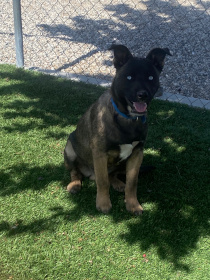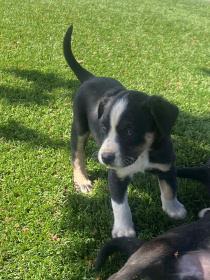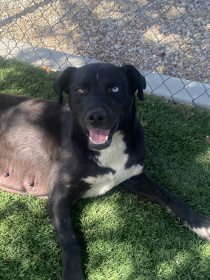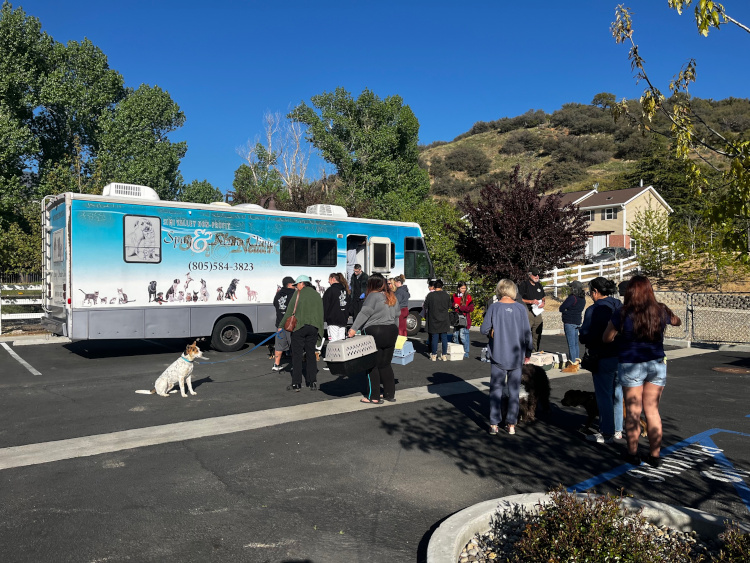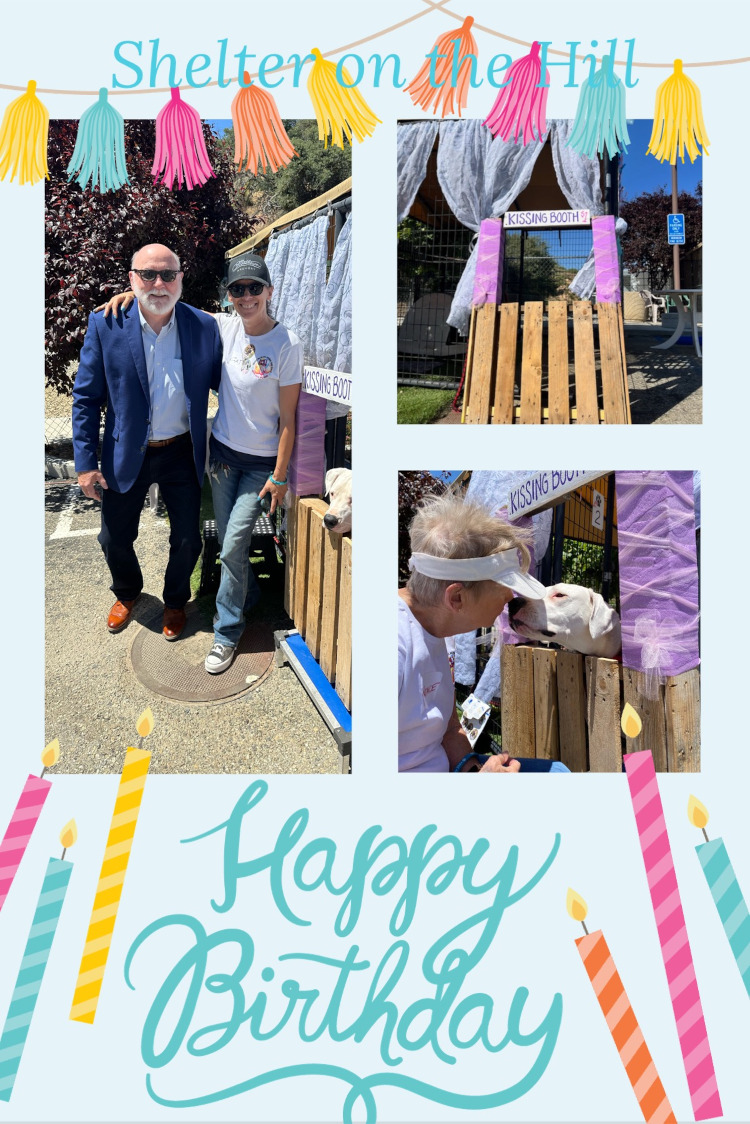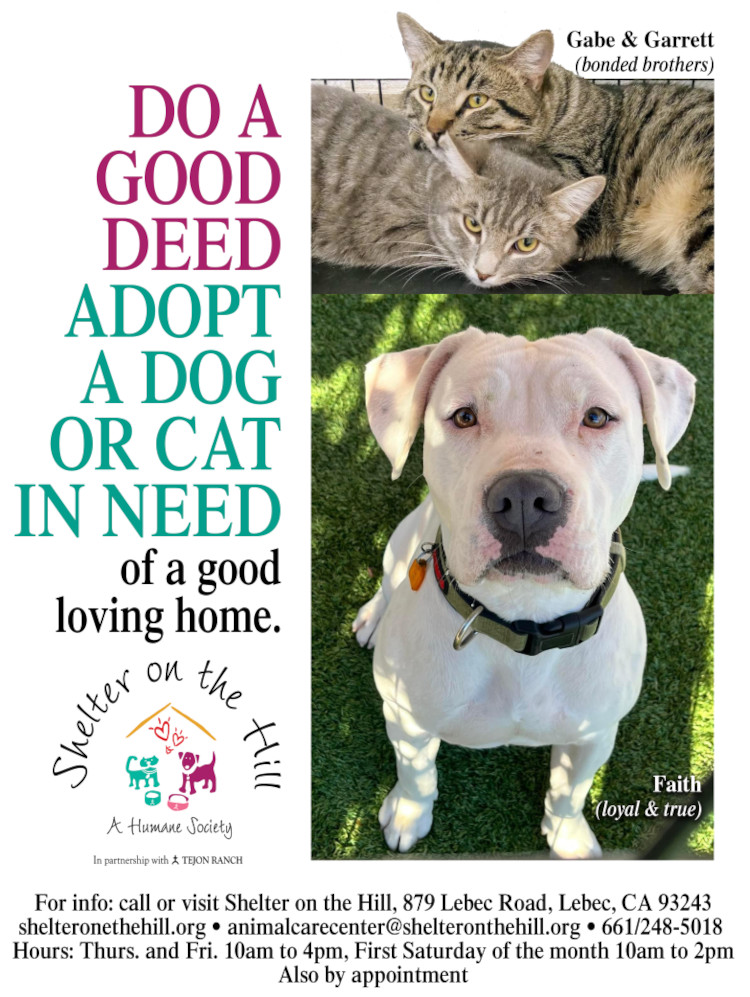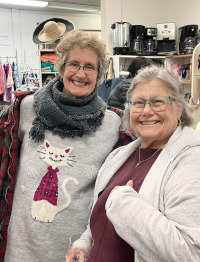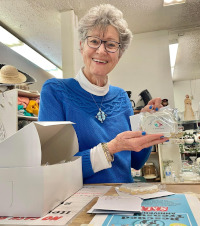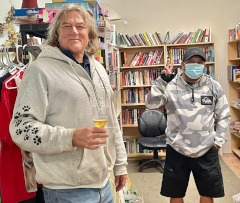Frazier Park's 57th Annual Fiesta Days celebration was held August 1-3, 2025, hosted by Mountain Memories Association. Locals and visitors alike enjoyed the parade, vendor booths, pet show, log sawing contest, live bands, rides and amusements for kids and more! Shelter on the Hill was well represented by honorary Mayor Candace Huskey and many of our volunteers who worked in our Shelter on the Hill booth at the Frazier Park Community park. Candace, with her favorite driver Larry, was in the parade with SOTH alumni Eddie. Our dog trainer, Tami Kearney of Mountain Top K-9 Training had SOTH pup Krypto at the booth in the park. Thank you to Mountain Memories for another successful event.
Shelter Outreach Brings us Reeba and Family
Last week SOTH learned about a homeless couple that got the opportunity to be housed in a regular home.
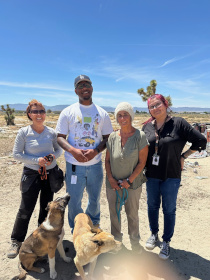 The only problem was, they had 17 dogs, and were only allowed to keep 3 in the new home.
The only problem was, they had 17 dogs, and were only allowed to keep 3 in the new home.
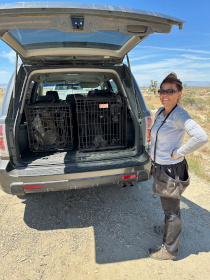 SOTH was told all the dogs were pretty friendly, and there were even 2 mama dogs with young puppies. SOTH’s dog trainer and whisperer Tami reached out to management at the shelter & asked if we could help. She said she would be willing to go out there, check everything out, see if they were healthy enough, and friendly enough to be adopted, etc. While out there, she learned this couple once lived locally in PMC and were evicted from their rental during Covid (owners wanted to sell) and had no where to go. They have been homeless for 3 years ☹️. And unfortunately, the husband has some health issues as well. For some reason this hit Tami hard because there was a possibility their paths crossed over the years.
SOTH was told all the dogs were pretty friendly, and there were even 2 mama dogs with young puppies. SOTH’s dog trainer and whisperer Tami reached out to management at the shelter & asked if we could help. She said she would be willing to go out there, check everything out, see if they were healthy enough, and friendly enough to be adopted, etc. While out there, she learned this couple once lived locally in PMC and were evicted from their rental during Covid (owners wanted to sell) and had no where to go. They have been homeless for 3 years ☹️. And unfortunately, the husband has some health issues as well. For some reason this hit Tami hard because there was a possibility their paths crossed over the years.
The 17 dogs were not their own, Over the years dogs were dumped and this couple tried to take care of them best they could, but they had no money, and the dumped dogs weren’t spayed/neutered. Next thing you know, you’ve got 17 dog!
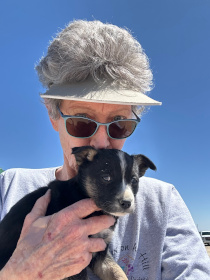
Tami decided on taking one of the older pups (5½ months) because he was soo cute, friendly, and just all around seemed like a good dog. Then she also decided on a few of the little pups because everyone loves puppies, right!!!
But they were too young to take away from mom, so she took her too – that way mom can still take care of them. Even mama dog (we named her Reeba) is pretty young herself.
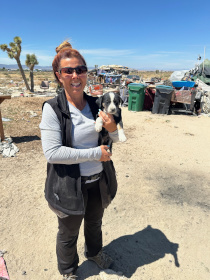
So we are pleased to introduce .... Reeba (mama dog) black lab mix, w/possible husky in there as well, white chest. She has one blue eye and one brown eye, is approximately 13-15 months old. Reeba is a good mama even though young. She’s a sweet girl w/people, but will still need to be tested with other dogs. Reeba is available to place a hold for adoption.
Marshall, a 5½ month old, who is sweet all around. He is black/brown/tan w/blue eyes, has been tested with a few dogs, but he’s still settling in, so we won’t over do it. Marshall is on hold already.
We named the puppies after the Peanuts characters. Chuck and Schroeder are on hold and Peppermint Patty is available to place a hold for adoption. Patty is about 6 weeks old now. She is mostly black with a white stripe or blaze on her face.
SOTH is praying everything works out for this previously local couple and their own three dogs in their new home. In the meantime there are more dogs out there in more encampments that need homes as well ....
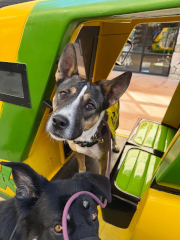
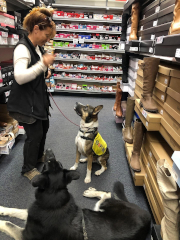
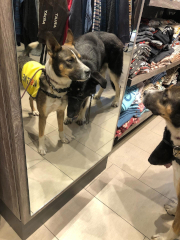


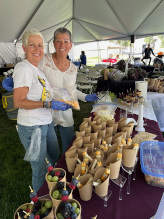
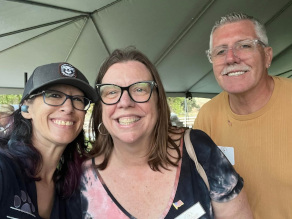
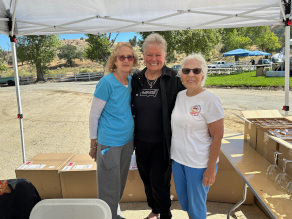
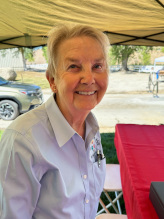

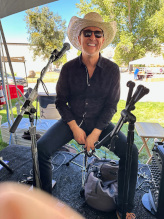


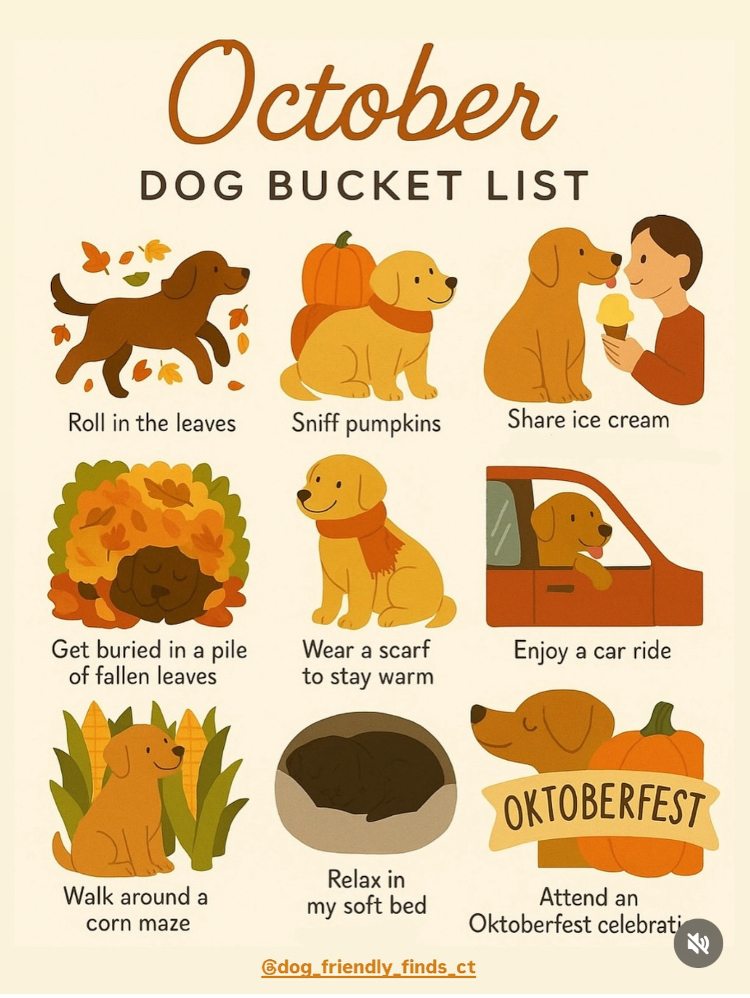
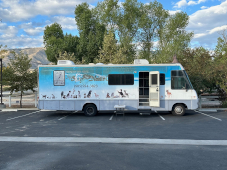
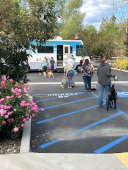
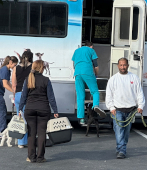
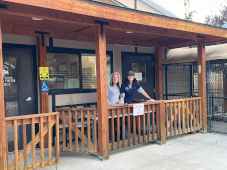
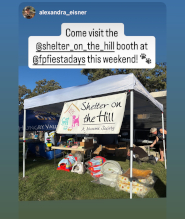
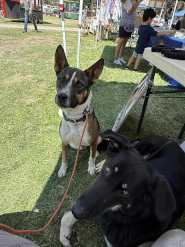
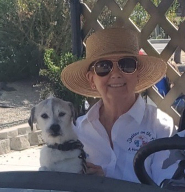
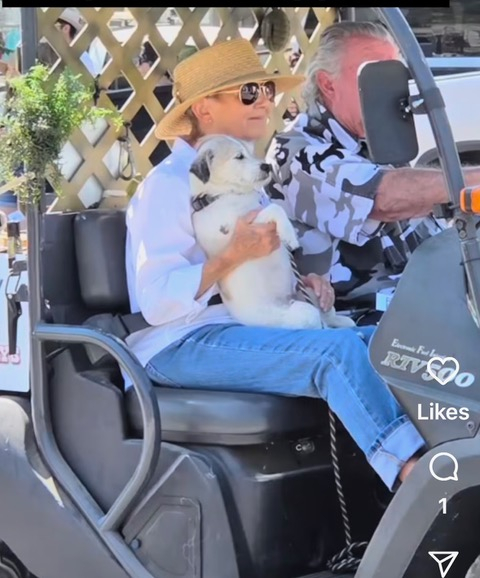
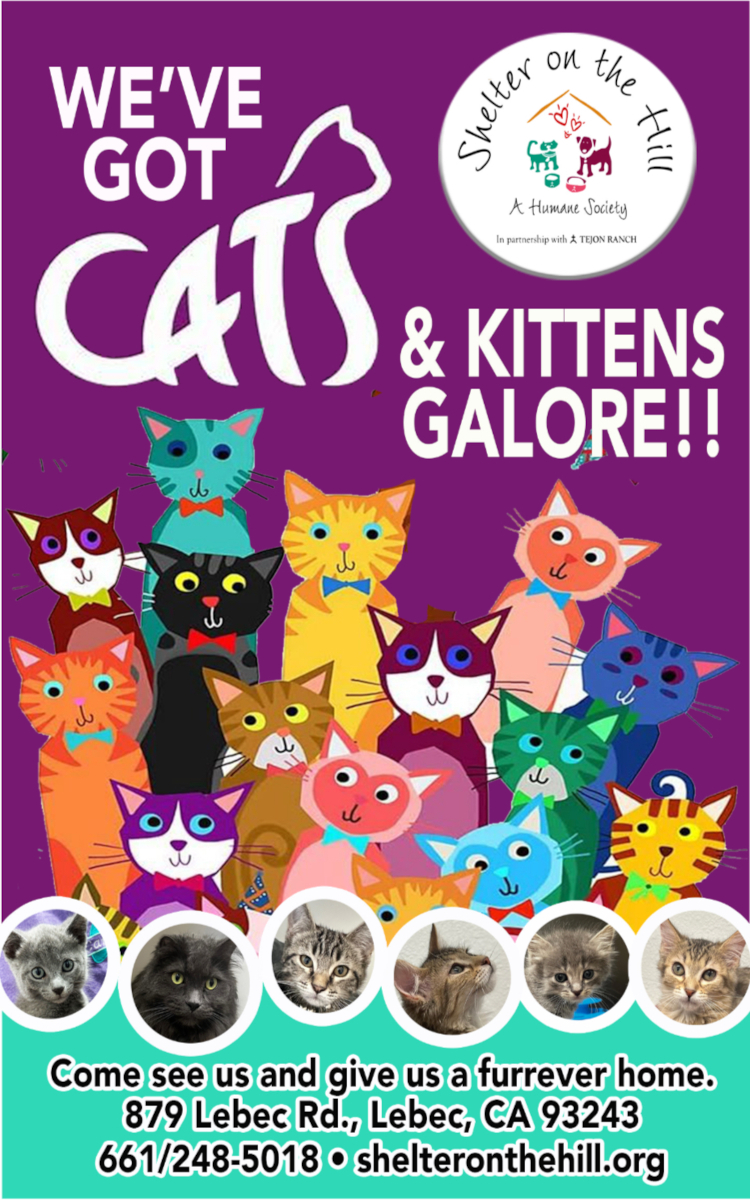
 The only problem was, they had 17 dogs, and were only allowed to keep 3 in the new home.
The only problem was, they had 17 dogs, and were only allowed to keep 3 in the new home.
 SOTH was told all the dogs were pretty friendly, and there were even 2 mama dogs with young puppies. SOTH’s dog trainer and whisperer Tami reached out to management at the shelter & asked if we could help. She said she would be willing to go out there, check everything out, see if they were healthy enough, and friendly enough to be adopted, etc. While out there, she learned this couple once lived locally in PMC and were evicted from their rental during Covid (owners wanted to sell) and had no where to go. They have been homeless for 3 years ☹️. And unfortunately, the husband has some health issues as well. For some reason this hit Tami hard because there was a possibility their paths crossed over the years.
SOTH was told all the dogs were pretty friendly, and there were even 2 mama dogs with young puppies. SOTH’s dog trainer and whisperer Tami reached out to management at the shelter & asked if we could help. She said she would be willing to go out there, check everything out, see if they were healthy enough, and friendly enough to be adopted, etc. While out there, she learned this couple once lived locally in PMC and were evicted from their rental during Covid (owners wanted to sell) and had no where to go. They have been homeless for 3 years ☹️. And unfortunately, the husband has some health issues as well. For some reason this hit Tami hard because there was a possibility their paths crossed over the years.

